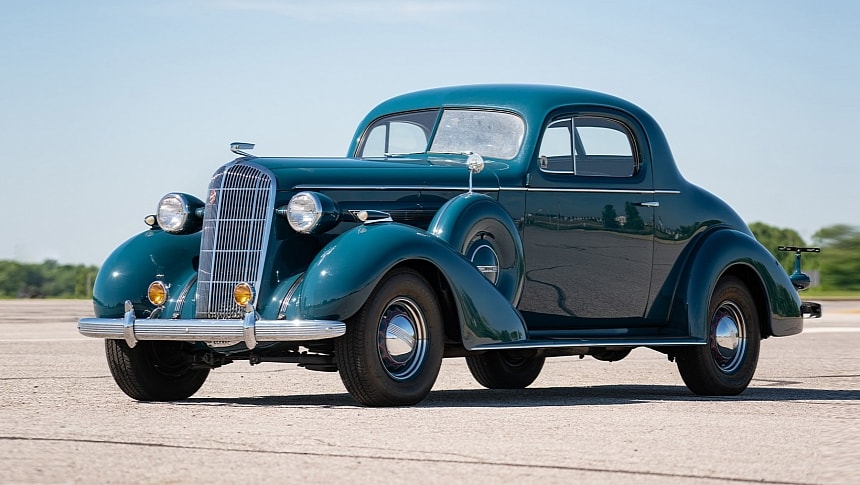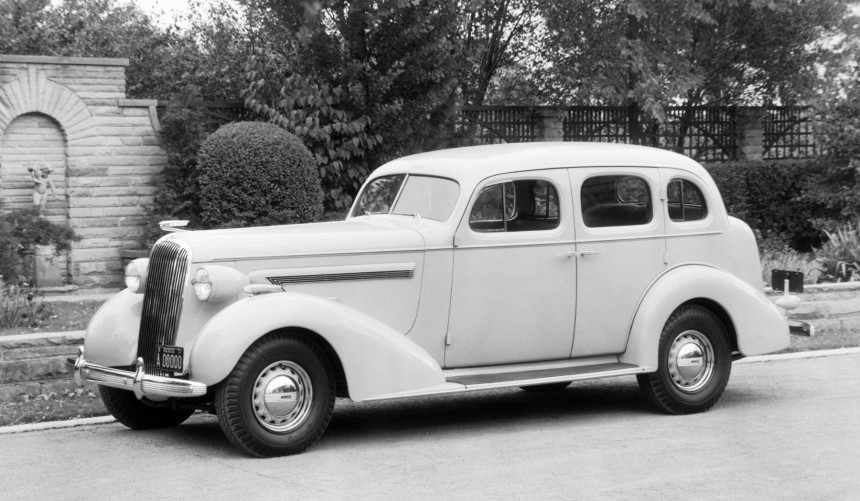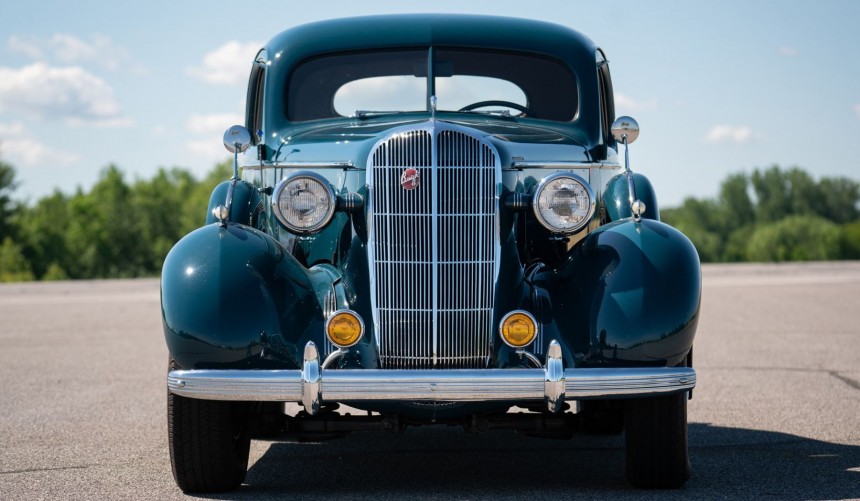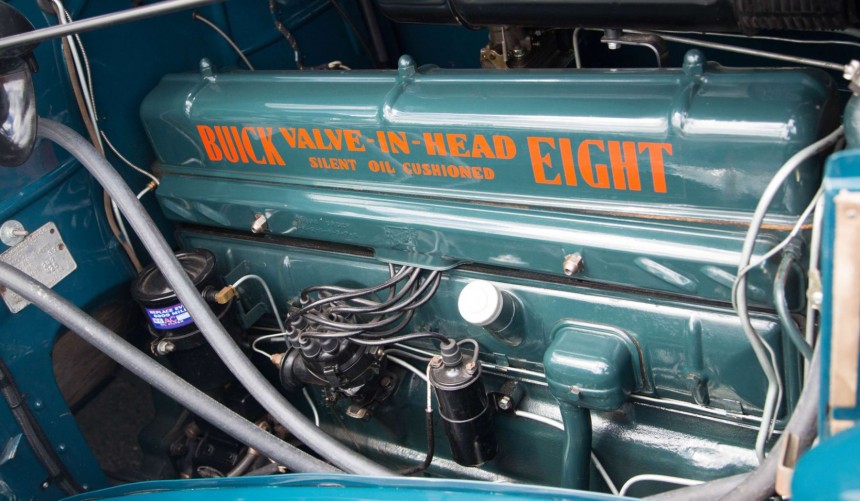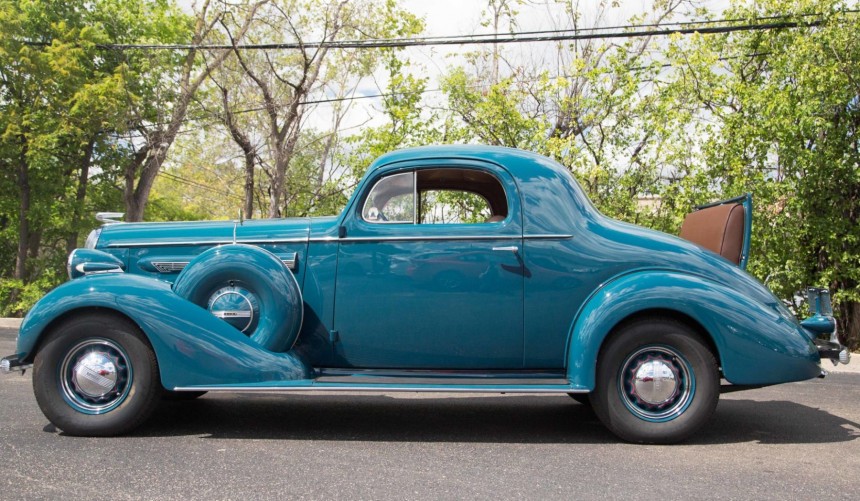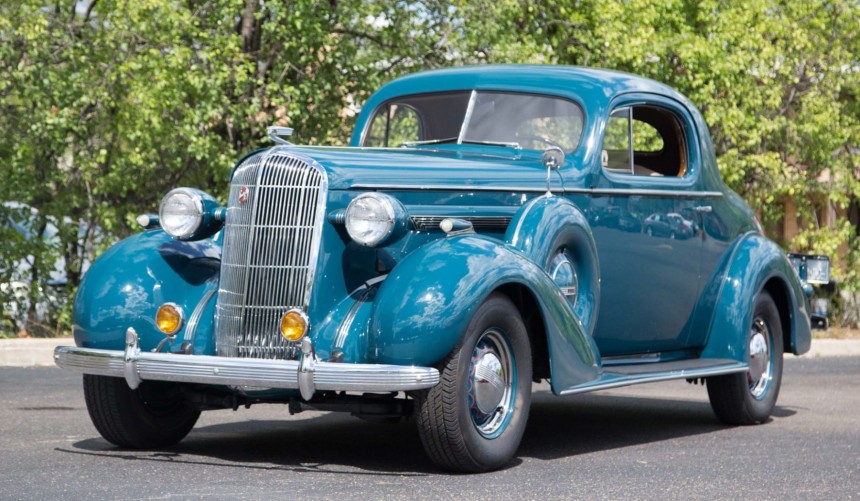Nearly three decades before Pontiac introduced the GTO, Buick launched a mid-size model powered by a potent engine borrowed from its larger passenger cars.
During the first half of the 1960s, multiple US carmakers began unleashing high-powered, factory-built intermediates.
Initially dubbed "supercars" and nicknamed "muscle cars," these drag strip-oriented, street-legal models usually employed high-horsepower engines borrowed from larger models.
In 1964, Pontiac employed this recipe to create the LeMans-based GTO, which became an instant hit and is currently credited with popularizing the muscle car.
Factory-built, high-performance cars like the GTO became increasingly popular with each model year, and today, they're the most iconic American-built vehicles of all time.
But while the GTO was the first popular muscle car, the first American-built model that borrowed a potent engine from its larger siblings was introduced nearly three decades earlier by Buick.
Founded in 1899 by automotive pioneer David Dunbar Buick, the company got off to a slow start, but after William "Billy" Crapo Durant became its general manager (and later, its president), Buick became America's leading carmaker.
In 1908, Durant established General Motors, which, apart from Buick, began incorporating other successful American brands in the following years.
As part of GM, Buick became an upscale, near-luxury brand, trailing only Cadillac in terms of corporate prestige.
Buick remained extremely successful in the following decades. Still, by 1929, the aging design of its models, along with the market crash that led to the Great Depression, saw its sales diminish considerably.
Luckily, the upscale division managed to stay afloat during the early 1930s thanks to redesigns and innovations, but sales were still far from pre-crash levels.
For the 1934 model year, Buicks got independent front suspensions and springs instead of leaves, so they delivered better handling as well as a more comfortable ride.
Nevertheless, this really started to turn around two years later when the division's entire passenger car lineup was extensively redesigned.
Thanks to the legendary Harley J. Earl and his Art and Color Section (GM's innovative design department), the 1936 Buicks received all-steel, streamlined bodies as GM finally gave up on the classic wood-and-steel approach.
The chassis, which, as I mentioned before, received a revamped suspension set up two years earlier, now came with hydraulic-operated brakes instead of the old-school mechanical system.
Another big change was the rebranding of the entire line. The entry-level, short-wheelbase model previously called Series 40 was now the Special. Next, the intermediate Series 60 became the Century, the large Series 80 was dubbed Roadmaster, whereas the Series 90, Buick's largest, most luxurious car, was now called Limited.
When it came to the powertrains, the 1936 Buicks relied on two versions of the company's overhead-valve (OHV) straight-eight, both of which mated to a lighter, smoother three-speed synchro-mesh manual transmission.
While the Special was powered by the standard 93-hp, 233-ci (3.8-liter) straight-eight, all other models used the all-new 320-ci (5.2-liter) version engineered to produce a healthy 120 horses.
That included the mid-size Century, which, in past Series 60 guise, was never available with the same engine as its larger siblings.
Around nine inches (229 mm) shorter and more than 400 pounds (181kg) lighter than the Roadmaster, the Century became Buick's performance-oriented offering, with the upscale division marketing it as the only American passenger car of its size capable of sustaining a speed of 100 mph (161 kph) - hence the Century moniker.
While that statement was more or less an exaggeration, the 1936 Century, with its 120-hp engine, was unquestionably potent, particularly when compared to similarly sized Fords or Chevys, which had to make do with powerplants rated well under the 100-hp mark.
Available in four body styles that included a two-door four-passenger sport coupe, a similar convertible coupe, a two-door, five-passenger coach called Victoria Coupe, and a four-door, five-passenger sedan, the Century was a huge marketing hit.
Regardless of the body style, the new model mixed brand prestige, a new design, superior driveability, and power like no other American passenger car of its size.
Subsequently nicknamed "the banker's hot rod," Buick's new Century and its 1936 siblings helped boost sales to nearly 180,000 units, a 65% increase over the previous year and more than four times better than the dreadful 1932-1933 totals.
Buick continued to offer the first-generation Century in continually-improved guises until 1942.
Afterward, the GM division took a step back from factory-built performance but came back with a vengeance in 1965 when it entered the muscle car wars with the Skylark Gran Sport.
In the meantime, other American carmakers started offering powerful engines in smaller packages.
By the strict definition, a muscle car is an affordable, American-built intermediate coupe that's powered by a large V8 engine - sometimes sourced from a full-size model.
While the first factory-built models that abide by this definition emerged in the early to mid-1960s, intermediates with full-size-sourced engines were introduced during the 1950s and are now known as proto-muscle cars.
But when it comes to proto-muscle cars, the very first is unquestionably Buick's forgotten 1936 Century.
Though the Pontiac GTO made muscle cars popular, it was the Buick Century that introduced the powerful engine/intermede platform combo, the main ingredient that gave birth to the muscle car nearly three decades later.
For a virtual tour of this four-wheeled American legend, we recommend watching the YouTube video below by USClassicMuscleCars.
Initially dubbed "supercars" and nicknamed "muscle cars," these drag strip-oriented, street-legal models usually employed high-horsepower engines borrowed from larger models.
In 1964, Pontiac employed this recipe to create the LeMans-based GTO, which became an instant hit and is currently credited with popularizing the muscle car.
Factory-built, high-performance cars like the GTO became increasingly popular with each model year, and today, they're the most iconic American-built vehicles of all time.
But while the GTO was the first popular muscle car, the first American-built model that borrowed a potent engine from its larger siblings was introduced nearly three decades earlier by Buick.
Attempting to revitalize a struggling brand
In 1908, Durant established General Motors, which, apart from Buick, began incorporating other successful American brands in the following years.
As part of GM, Buick became an upscale, near-luxury brand, trailing only Cadillac in terms of corporate prestige.
Buick remained extremely successful in the following decades. Still, by 1929, the aging design of its models, along with the market crash that led to the Great Depression, saw its sales diminish considerably.
Luckily, the upscale division managed to stay afloat during the early 1930s thanks to redesigns and innovations, but sales were still far from pre-crash levels.
For the 1934 model year, Buicks got independent front suspensions and springs instead of leaves, so they delivered better handling as well as a more comfortable ride.
Nevertheless, this really started to turn around two years later when the division's entire passenger car lineup was extensively redesigned.
A series of important upgrades
The chassis, which, as I mentioned before, received a revamped suspension set up two years earlier, now came with hydraulic-operated brakes instead of the old-school mechanical system.
Another big change was the rebranding of the entire line. The entry-level, short-wheelbase model previously called Series 40 was now the Special. Next, the intermediate Series 60 became the Century, the large Series 80 was dubbed Roadmaster, whereas the Series 90, Buick's largest, most luxurious car, was now called Limited.
More power in a smaller package
While the Special was powered by the standard 93-hp, 233-ci (3.8-liter) straight-eight, all other models used the all-new 320-ci (5.2-liter) version engineered to produce a healthy 120 horses.
That included the mid-size Century, which, in past Series 60 guise, was never available with the same engine as its larger siblings.
Around nine inches (229 mm) shorter and more than 400 pounds (181kg) lighter than the Roadmaster, the Century became Buick's performance-oriented offering, with the upscale division marketing it as the only American passenger car of its size capable of sustaining a speed of 100 mph (161 kph) - hence the Century moniker.
While that statement was more or less an exaggeration, the 1936 Century, with its 120-hp engine, was unquestionably potent, particularly when compared to similarly sized Fords or Chevys, which had to make do with powerplants rated well under the 100-hp mark.
The banker's hot rod
Regardless of the body style, the new model mixed brand prestige, a new design, superior driveability, and power like no other American passenger car of its size.
Subsequently nicknamed "the banker's hot rod," Buick's new Century and its 1936 siblings helped boost sales to nearly 180,000 units, a 65% increase over the previous year and more than four times better than the dreadful 1932-1933 totals.
The first proto-muscle car
Afterward, the GM division took a step back from factory-built performance but came back with a vengeance in 1965 when it entered the muscle car wars with the Skylark Gran Sport.
In the meantime, other American carmakers started offering powerful engines in smaller packages.
By the strict definition, a muscle car is an affordable, American-built intermediate coupe that's powered by a large V8 engine - sometimes sourced from a full-size model.
While the first factory-built models that abide by this definition emerged in the early to mid-1960s, intermediates with full-size-sourced engines were introduced during the 1950s and are now known as proto-muscle cars.
But when it comes to proto-muscle cars, the very first is unquestionably Buick's forgotten 1936 Century.
Though the Pontiac GTO made muscle cars popular, it was the Buick Century that introduced the powerful engine/intermede platform combo, the main ingredient that gave birth to the muscle car nearly three decades later.
For a virtual tour of this four-wheeled American legend, we recommend watching the YouTube video below by USClassicMuscleCars.
